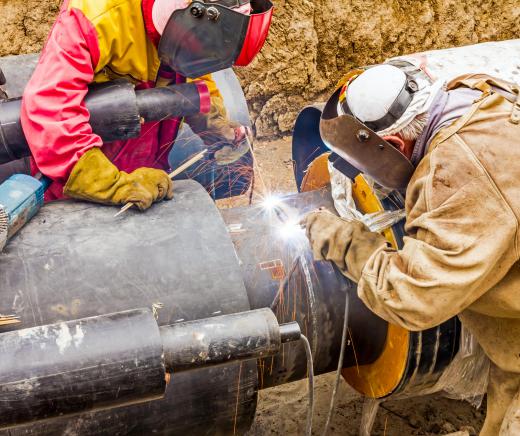Thermite is a chemical compound that consists of a reactive metal and a metal oxide, usually both in a powdered state, mixed together. The type of metals used can vary, though the most common combination consists of aluminum as the reactive metal and iron oxide, also known as rust. These two metals are ground down into a powder or shavings and then mixed together, at which point they are still relatively safe to handle as long as the mixture is not exposed to high temperatures. Thermite produces an intense exothermic reaction, not an inherently explosive reaction, once a proper ignition source is applied.
While different metals can be used to create thermite, the typical combination used is aluminum and iron oxide. The aluminum is used because it is a reactive metal with a very high boiling point and a low melting point. Aluminum’s high boiling point is important because the maximum temperature reached during a thermite reaction — the process of the composition burning — is typically limited by the boiling point of the reactive metal used, while the low melting point allows the reaction to occur once the aluminum is in a liquid phase. Since aluminum is also quite inexpensive, it is ideal for commercial and industrial purposes. Iron oxide is also an affordable metallic oxide to use, though other metals such as chromium and copper can be used as well.

A basic thermite reaction consists of the two metals, for example aluminum and iron oxide, being combined and then having an ignition source of very high heat introduced. Standard ignition caps and fuses will not typically work, and magnesium strips are often used to achieve the heat necessary to begin the reaction. Once the aluminum reaches a high temperature, then the iron oxide and aluminum combine to create free elemental iron, aluminum oxide, and tremendous heat.
The ignition of thermite is an exothermic reaction, which means more energy is produced in the reaction than is needed to create it, and this energy is released as intense heat of up to 4,500° F (about 2,500° C). This thermite reaction is used in a number of commercial and manufacturing applications. Since the resulting composition creates pure metal, this process can be used to extract metals for use in construction.
The intense heat created in this reaction can also be used to melt metals, and is used in welding and cutting through metal. Care must be taken when used in welding, however, since there is a tendency for air pockets and potential weak spots to form due to the use of molten metal. Thermite can even be used in limited ways underwater, since the reaction actually creates its own oxygen supply to continue fueling the reaction.
